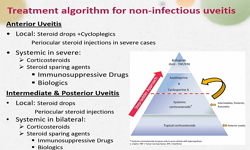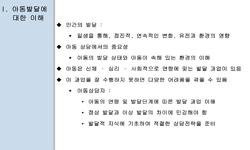Purpose: Acute acetaminophen intoxication is a common occurrence that can cause lethal complications. In most domestic emergency departments, clinicians tend to treat acetaminophen intoxication based on patients’ history alone, simply due to the lac...
http://chineseinput.net/에서 pinyin(병음)방식으로 중국어를 변환할 수 있습니다.
변환된 중국어를 복사하여 사용하시면 됩니다.
- 中文 을 입력하시려면 zhongwen을 입력하시고 space를누르시면됩니다.
- 北京 을 입력하시려면 beijing을 입력하시고 space를 누르시면 됩니다.

환자의 아세트아미노펜 중독 여부를 환자진술 만으로 확인하는 것이 타당한가? : 혈중에서 아세트아미노펜이 검출된 환자의 임상 양상 분석 = Is it Adequate to Determine Acetaminophen Toxicity Solely on Patients’ History? An Analysis on Clinical Manifestation of Intoxication Patients with Positive Serum Acetaminophen Concentrations
한글로보기https://www.riss.kr/link?id=A105101472
- 저자
- 발행기관
- 학술지명
- 권호사항
-
발행연도
2017
-
작성언어
Korean
- 주제어
-
등재정보
KCI등재후보
-
자료형태
학술저널
-
수록면
94-100(7쪽)
-
KCI 피인용횟수
2
- DOI식별코드
- 제공처
- 소장기관
-
0
상세조회 -
0
다운로드
부가정보
다국어 초록 (Multilingual Abstract)
Purpose: Acute acetaminophen intoxication is a common occurrence that can cause lethal complications. In most domestic emergency departments, clinicians tend to treat acetaminophen intoxication based on patients’ history alone, simply due to the lack of a rapid acetaminophen laboratory test. We performed a 20-month study of intoxication patients to determine the correlation between the history of patients and serum laboratory tests for acetaminophen.
Methods: We took blood samples from 280 intoxication patients to evaluate whether laboratory findings detected traces of acetaminophen in the sample. Patients were then treated according to their history. Laboratory results came out after patients’ discharge. Agreement between patients’ history and laboratory results were analyzed.
Results: Among the 280 intoxicated patients enrolled, 38 patients had positive serum acetaminophen concentrations; 18 out of 38 patients did not represent a history suggesting acetaminophen intoxication. One patient without the history showed toxic serum acetaminophen concentration. Among the patients with the history, two patients with toxic serum acetaminophen concentration did not receive N-acetylcysteine (NAC) treatment due to their low reported doses, while other 2 patients without significant serum acetaminophen concentration did receive NAC treatment due to their high reported doses.
Conclusion: This study showed a good overall agreement between history and laboratory test results. However, some cases showed inconsistencies between their history and laboratory test results. Therefore, in treating intoxication patients, a laboratory test of acetaminophen with rapid results should be available in most domestic emergency departments.
참고문헌 (Reference)
1 이지연, "아세트아미노펜 중독에 의한 급성 신부전 1예" 대한내과학회 80 (80): 348-351, 2011
2 Schulz M, "Therapeutic and toxic blood concentrations of nearly 1,000drugs and other xenobiotics" 16 (16): R136-, 2012
3 Tonoli D, "Quantification of acetaminophen and two of its metabolites in human plasma by ultra-high performance liquid chromatography-low and high resolution tandem mass spectrometry" 904 : 42-50, 2012
4 Froberg BA, "Negative predictive value of acetaminophen concentrations within four hours of ingestion" 20 (20): 1072-1075, 2013
5 Ambre J, "Liver toxicity after acetaminophen ingestion. Inadequacy of the dose estimate as an index of risk" 238 (238): 500-501, 1977
6 Kim TG, "Is N-acetylcysteine treatment based on ingestion amount valid in acute acetaminophen overdose patients?" 4 (4): 107-112, 2006
7 Pohjola-Sintonen S, "Identification of drugs ingested in acute poisoning: correlation of patient history with drug analyses" 22 (22): 749-752, 2000
8 Bum J, "Extended blood drug concentrations in extended release formulated acetaminophen overdose patients" 9 (9): 71-76, 2011
9 Ingram DM, "Evaluation of a urine screen for acetaminophen" 4 (4): 96-100, 2008
10 Rhyee SH, "Early serum acetaminophen levels: how soon is too soon?" 20 (20): 1070-1071, 2013
1 이지연, "아세트아미노펜 중독에 의한 급성 신부전 1예" 대한내과학회 80 (80): 348-351, 2011
2 Schulz M, "Therapeutic and toxic blood concentrations of nearly 1,000drugs and other xenobiotics" 16 (16): R136-, 2012
3 Tonoli D, "Quantification of acetaminophen and two of its metabolites in human plasma by ultra-high performance liquid chromatography-low and high resolution tandem mass spectrometry" 904 : 42-50, 2012
4 Froberg BA, "Negative predictive value of acetaminophen concentrations within four hours of ingestion" 20 (20): 1072-1075, 2013
5 Ambre J, "Liver toxicity after acetaminophen ingestion. Inadequacy of the dose estimate as an index of risk" 238 (238): 500-501, 1977
6 Kim TG, "Is N-acetylcysteine treatment based on ingestion amount valid in acute acetaminophen overdose patients?" 4 (4): 107-112, 2006
7 Pohjola-Sintonen S, "Identification of drugs ingested in acute poisoning: correlation of patient history with drug analyses" 22 (22): 749-752, 2000
8 Bum J, "Extended blood drug concentrations in extended release formulated acetaminophen overdose patients" 9 (9): 71-76, 2011
9 Ingram DM, "Evaluation of a urine screen for acetaminophen" 4 (4): 96-100, 2008
10 Rhyee SH, "Early serum acetaminophen levels: how soon is too soon?" 20 (20): 1070-1071, 2013
11 Waring WS, "Does the patient history predict hepatotoxicity after acute paracetamol overdose?" 101 (101): 121-125, 2008
12 Wolf SJ, "Clinical policy: critical issues in the management of patients presenting to the emergency department with acetaminophen overdose" 50 (50): 292-313, 2007
13 Heard KJ, "Acetylcysteine for acetaminophen poisoning" 359 (359): 285-292, 2008
14 Dargan PI, "Acetaminophen poisoning: an update for the intensivist" 6 (6): 108-, 2002
15 Dart RC, "Acetaminophen poisoning: an evidencebased consensus guideline for out-of-hospital management" 44 (44): 1-18, 2006
16 Rumack BH, "Acetaminophen hepatotoxicity: the first 35years" 40 (40): 3-20, 2002
17 Seifert SA, "Acetaminophen concentrations prior to 4 hours of ingestion: impact on diagnostic decision-making and treatment" 53 (53): 618-623, 2015
18 Camilleri R, "A Meta-analysis of the reliability of the history in suspected poisoning" 48 (48): 679-684, 2015
19 Mowry JB, "2015 Annual report of the american association of poison control centers’ national poison data system (NPDS): 33rd annual report" 54 : 924-1109, 2016
동일학술지(권/호) 다른 논문
-
한국 소아청소년 중독 환자의 경향: 국가응급진료정보망을 이용한 후향적 연구
- 대한임상독성학회
- 이경재 ( Kyeongjae Lee )
- 2017
- KCI등재후보
-
소아의 에틸렌글리콜 및 메탄올 중독에서 Fomepizole의 효과
- 대한임상독성학회
- 민하나 ( Ha Na Min )
- 2017
- KCI등재후보
-
2016년 응급실 손상환자 심층조사 자료를 이용한 중독 환자의 분석
- 대한임상독성학회
- 정성필 ( Sung Phil Chung )
- 2017
- KCI등재후보
-
수도권 부검시료에서 중독사 관련 사용물질 현황(2014-2016)
- 대한임상독성학회
- 박미정 ( Meejung Park )
- 2017
- KCI등재후보
분석정보
인용정보 인용지수 설명보기
학술지 이력
| 연월일 | 이력구분 | 이력상세 | 등재구분 |
|---|---|---|---|
| 2027 | 평가예정 | 재인증평가 신청대상 (재인증) | |
| 2021-01-01 | 평가 | 등재학술지 유지 (재인증) |  |
| 2018-01-01 | 평가 | 등재학술지 선정 (계속평가) |  |
| 2016-11-17 | 학회명변경 | 영문명 : Journal of The Korean Society of Clinical Toxicology -> Korean Society of Clinical Toxicology |  |
| 2016-01-01 | 평가 | 등재후보학술지 선정 (신규평가) |  |
학술지 인용정보
| 기준연도 | WOS-KCI 통합IF(2년) | KCIF(2년) | KCIF(3년) |
|---|---|---|---|
| 2016 | 0 | 0 | 0 |
| KCIF(4년) | KCIF(5년) | 중심성지수(3년) | 즉시성지수 |
| 0 | 0 | 0 | 0 |





 ScienceON
ScienceON KISS
KISS







